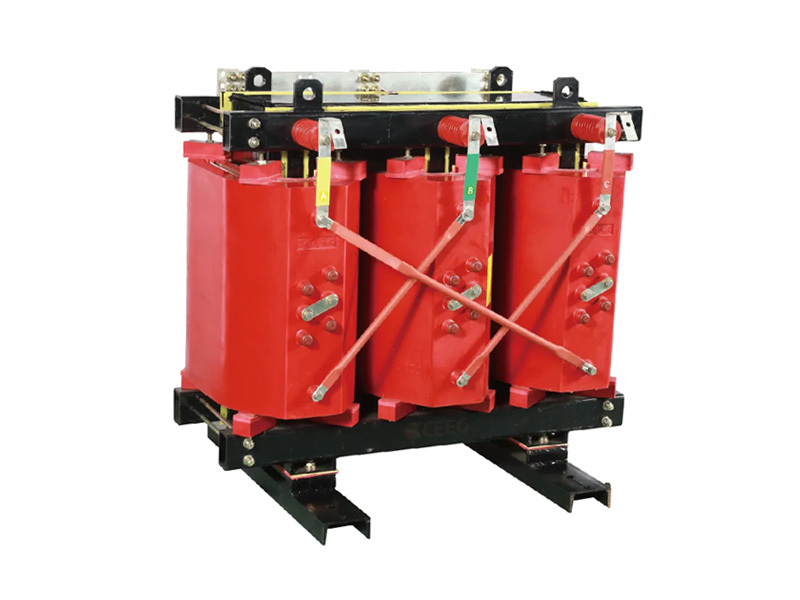He' Nan Chineng Electric Power Equipment Co., Ltd
Understanding the Benefits of Dry-Type Transformers in Modern Electrical Systems
Apr 15,2025
Understanding the Benefits of Dry-Type Transformers in Modern Electrical Systems
Table of Contents
- 1. Introduction to Dry-Type Transformers
- 2. What Are Dry-Type Transformers?
- 3. Advantages of Dry-Type Transformers
- 3.1 Safety Features and Benefits
- 3.2 Environmental Impact and Sustainability
- 3.3 Reduced Maintenance and Operational Costs
- 3.4 High Efficiency in Electrical Systems
- 3.5 Versatile Applications in Various Industries
- 4. Comparison with Oil-Filled Transformers
- 5. Case Studies of Dry-Type Transformers in Use
- 6. The Future of Dry-Type Transformers in Electrical Systems
- 7. Conclusion
- 8. FAQs on Dry-Type Transformers
1. Introduction to Dry-Type Transformers
Dry-type transformers play a crucial role in modern electrical systems, serving as an essential component for power distribution and voltage transformation. Unlike traditional oil-filled transformers, dry-type transformers use air as their primary cooling medium. This fundamental difference not only enhances their safety but also makes them a more environmentally friendly choice. In this article, we explore the myriad benefits of dry-type transformers, their operational efficiencies, and why they are becoming increasingly popular in various industrial applications.
2. What Are Dry-Type Transformers?
Dry-type transformers are electrical devices used to change the voltage of alternating current (AC) in power systems without the use of liquid insulation or cooling mediums. They are constructed with insulation materials that are solid, such as epoxy or resin, which allow them to operate without the risk of leaks or spills associated with oil-filled transformers. These transformers are particularly advantageous in environments where moisture and flammable liquids pose a risk.
The design incorporates a robust core and winding structure that helps in maintaining operational integrity while allowing for efficient heat dissipation. This makes dry-type transformers ideal for both indoor and outdoor applications, where space, safety, and environmental considerations are of paramount importance.
3. Advantages of Dry-Type Transformers
Dry-type transformers offer a wealth of advantages that make them a preferred choice in modern electrical applications. Let’s delve deeper into their key benefits.
3.1 Safety Features and Benefits
Safety is one of the most significant advantages of dry-type transformers. Unlike oil-filled transformers, which pose a risk of fire and environmental contamination in the event of a leak, dry-type transformers eliminate these hazards. Their non-flammable construction reduces the risk of accidents in facilities where safety is a priority, such as hospitals, schools, and data centers. Furthermore, they do not require special fire suppression systems, making them a cost-effective choice for facilities that prioritize safety.
3.2 Environmental Impact and Sustainability
Dry-type transformers are widely regarded as environmentally friendly due to their lack of hazardous materials. They do not contain oil, which can lead to environmental contamination if leaks occur. Additionally, the use of recyclable materials in their construction aligns with modern sustainability goals. As organizations increasingly prioritize green energy solutions, dry-type transformers address these concerns by minimizing ecological footprints while providing reliable performance.
3.3 Reduced Maintenance and Operational Costs
The maintenance requirements for dry-type transformers are significantly lower compared to their oil-filled counterparts. The absence of oil means there is no need for oil sampling or replacement, and the risk of leaks is virtually eliminated. This aspect leads to reduced operational costs, as facilities can allocate fewer resources to maintenance activities. Long-term savings on upkeep contribute to the overall financial advantages of using dry-type transformers.
3.4 High Efficiency in Electrical Systems
Efficiency is a critical factor in the performance of electrical systems, and dry-type transformers deliver excellent efficiency ratings. Their design allows for minimal energy loss during voltage transformation, resulting in lower operational costs and reduced energy consumption. As energy efficiency becomes increasingly important in today’s world, particularly with rising energy prices, dry-type transformers offer a compelling solution for businesses looking to optimize their power usage.
3.5 Versatile Applications in Various Industries
Dry-type transformers are versatile and adaptable, making them suitable for various applications across multiple industries. Common uses include:
- **Commercial buildings**: Providing reliable power distribution in office spaces.
- **Industrial facilities**: Supporting manufacturing processes with stable voltage levels.
- **Renewable energy systems**: Integrating with solar and wind energy setups.
- **Telecommunications**: Ensuring uninterrupted power supply for critical communications infrastructure.
Because of their flexibility and broad applicability, dry-type transformers are becoming a go-to choice for many sectors.
4. Comparison with Oil-Filled Transformers
When comparing dry-type transformers to oil-filled transformers, several key differences emerge.
Firstly, **safety** is a primary concern; dry-type transformers are inherently safer due to their non-flammable design. In contrast, oil-filled transformers pose a risk of fire and environmental contamination.
Secondly, the **maintenance requirements** differ significantly. Dry-type transformers require minimal maintenance, while oil-filled units need regular inspections and oil changes, leading to higher operational costs.
Lastly, from an **environmental perspective**, dry-type transformers are more sustainable, aligning with the increasing demand for eco-friendly solutions. This makes them more appealing to businesses focused on reducing their environmental impact.
5. Case Studies of Dry-Type Transformers in Use
Examining real-world applications of dry-type transformers can shed light on their effectiveness and advantages.
- **Hospital Case Study**: A large hospital opted for dry-type transformers to enhance safety and reliability. The facility experienced a notable reduction in operational costs due to minimal maintenance and energy efficiency, while providing a secure environment for patient care.
- **Manufacturing Facility**: A manufacturing plant implemented dry-type transformers to support their production lines. The switch led to improved energy efficiency, substantial savings on maintenance, and a significant reduction in downtime, enhancing overall productivity.
These case studies exemplify the practical benefits that dry-type transformers can bring to various sectors.
6. The Future of Dry-Type Transformers in Electrical Systems
As technology continues to advance, the future of dry-type transformers looks promising. Innovations in materials and designs are likely to enhance their efficiency and adaptability further. The growing trend towards renewable energy solutions will also drive demand for dry-type transformers, as they are well-suited for integration with solar and wind power systems.
Additionally, with increased regulatory focus on environmental sustainability, dry-type transformers stand to benefit from a market shift towards greener alternatives. Their ability to provide safe, efficient, and reliable power solutions positions them as a vital component in the future of electrical systems.
7. Conclusion
In summary, dry-type transformers offer numerous benefits that make them an essential element in modern electrical systems. Their safety features, reduced maintenance requirements, environmental sustainability, and versatility in applications position them as a superior choice for various industries. As organizations continue to prioritize safety, efficiency, and environmental impact, the adoption of dry-type transformers is set to rise, reinforcing their importance in the ever-evolving electrical landscape.
8. FAQs on Dry-Type Transformers
What are the key differences between dry-type and oil-filled transformers?
Dry-type transformers use air for cooling and do not contain oil, making them inherently safer and easier to maintain compared to oil-filled transformers.
Are dry-type transformers suitable for outdoor use?
Yes, dry-type transformers can be designed for outdoor applications, ensuring protection from environmental elements while maintaining performance.
What are the typical applications for dry-type transformers?
They are commonly used in commercial buildings, industrial facilities, renewable energy systems, and telecommunication infrastructures.
Do dry-type transformers require any special maintenance?
Dry-type transformers require minimal maintenance, primarily involving routine inspections rather than oil sampling or replacements.
How do dry-type transformers contribute to energy efficiency?
Their design minimizes energy loss during voltage transformation, leading to lower operational costs and reduced energy consumption in electrical systems.
This comprehensive guide provides insight into the advantages of dry-type transformers and how they are shaping modern electrical systems.










